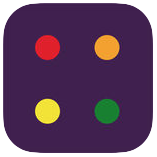 Last week I had a pleasant acquaintance with Adam Giemza, head of solution architecture and security at DB Schenker AG. He asked me about Progressive web and my opinion to it. Frankly speaking, I had no opinion at all, because I’m specialized more on native apps for iOS and Android. Of course, hybrid apps, mobile first approach, responsive design are the things I heard of and had even a bit experience with them. But what are Progressive web apps? I began to read about it.
Last week I had a pleasant acquaintance with Adam Giemza, head of solution architecture and security at DB Schenker AG. He asked me about Progressive web and my opinion to it. Frankly speaking, I had no opinion at all, because I’m specialized more on native apps for iOS and Android. Of course, hybrid apps, mobile first approach, responsive design are the things I heard of and had even a bit experience with them. But what are Progressive web apps? I began to read about it.
The term “progressive web” appeared 2015 to describe web apps taking advantage of features supported by modern browsers, including Service Workers and Web App Manifests. Progressive web apps are:
- Progressive – Work for every user, regardless of browser choice because they’re built with progressive enhancement as a core tenet.
- Responsive – Fit any form factor: desktop, mobile, tablet, or forms yet to emerge.
- Connectivity independent – Service workers allow work offline, or on low quality networks.
- App-like – Feel like an app to the user with app-style interactions and navigation.
- Fresh – Always up-to-date thanks to the service worker update process.
- Safe – Served via HTTPS to prevent snooping and ensure content hasn’t been tampered with.
- Discoverable – Are identifiable as “applications” thanks to W3C manifests and service worker registration scope allowing search engines to find them.
- Re-engageable – Make re-engagement easy through features like push notifications.
- Installable – Allow users to “keep” apps they find most useful on their home screen without the hassle of an app store.
- Linkable – Easily shared via a URL and do not require complex installation.
As far as I understand the main difference to the hybrid apps, e.g. based on Cordova is that progressive web apps are not wrapped into some mobile application, but are more like a website. It is the web browser features, i.e. service worker and manifest which make these web application look and feel like native apps. And in opposite, the difference to a responsive web site is that progressive web apps can be used offline and look more “native”.
The concept of progressive web apps is very interesting. It is on one hand the next step towards cross platform development. On the other hand it is the step towards app distribution without app stores. I can think of many use cases where a progressive app has more advantages over native implementation for multiple platforms. Some examples of progressive web apps can be found here.
 I’m glad to announce a new app Cheat-sheets, which is available since last Sunday in iTunes. Cheat-sheets app is for those of us who just cannot keep hundreds of little things in his head. You can organize your cheats in sheets by topic and access them on your iPad, iPhone and Apple Watch.
I’m glad to announce a new app Cheat-sheets, which is available since last Sunday in iTunes. Cheat-sheets app is for those of us who just cannot keep hundreds of little things in his head. You can organize your cheats in sheets by topic and access them on your iPad, iPhone and Apple Watch. Last week I had a pleasant acquaintance with Adam Giemza, head of solution architecture and security at DB Schenker AG. He asked me about Progressive web and my opinion to it. Frankly speaking, I had no opinion at all, because I’m specialized more on native apps for iOS and Android. Of course, hybrid apps, mobile first approach, responsive design are the things I heard of and had even a bit experience with them. But what are Progressive web apps? I began to read about it.
Last week I had a pleasant acquaintance with Adam Giemza, head of solution architecture and security at DB Schenker AG. He asked me about Progressive web and my opinion to it. Frankly speaking, I had no opinion at all, because I’m specialized more on native apps for iOS and Android. Of course, hybrid apps, mobile first approach, responsive design are the things I heard of and had even a bit experience with them. But what are Progressive web apps? I began to read about it. Once I reported about my experience with
Once I reported about my experience with  The Multipeer Connectivity APIs, introduced by Apple in iOS 7 is an easy way to start building apps requiring peer-to-peer communication. Nearby devices communicate over infrastructure Wi-Fi networks, peer-to-peer Wi-Fi, and Bluetooth personal area networks. Connected peers are able securely transmit messages, streams, or file resources to other devices.
The Multipeer Connectivity APIs, introduced by Apple in iOS 7 is an easy way to start building apps requiring peer-to-peer communication. Nearby devices communicate over infrastructure Wi-Fi networks, peer-to-peer Wi-Fi, and Bluetooth personal area networks. Connected peers are able securely transmit messages, streams, or file resources to other devices. HockeyApp
HockeyApp